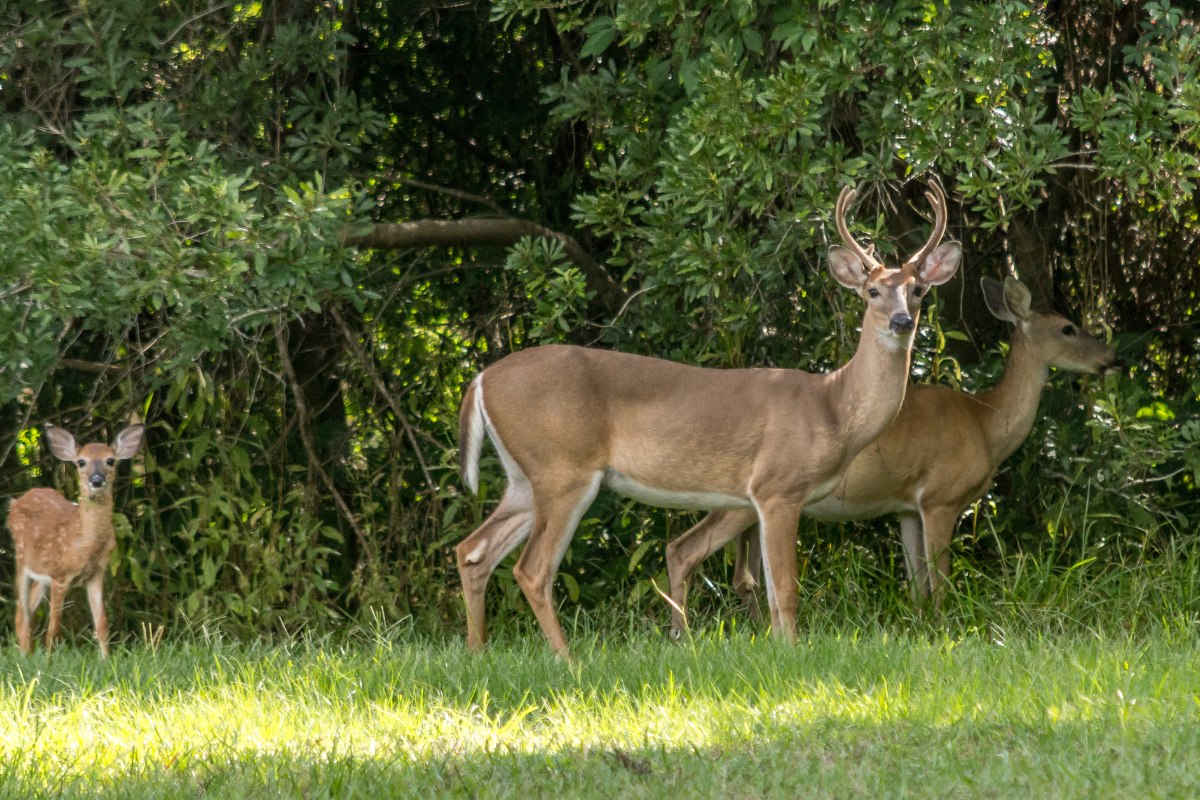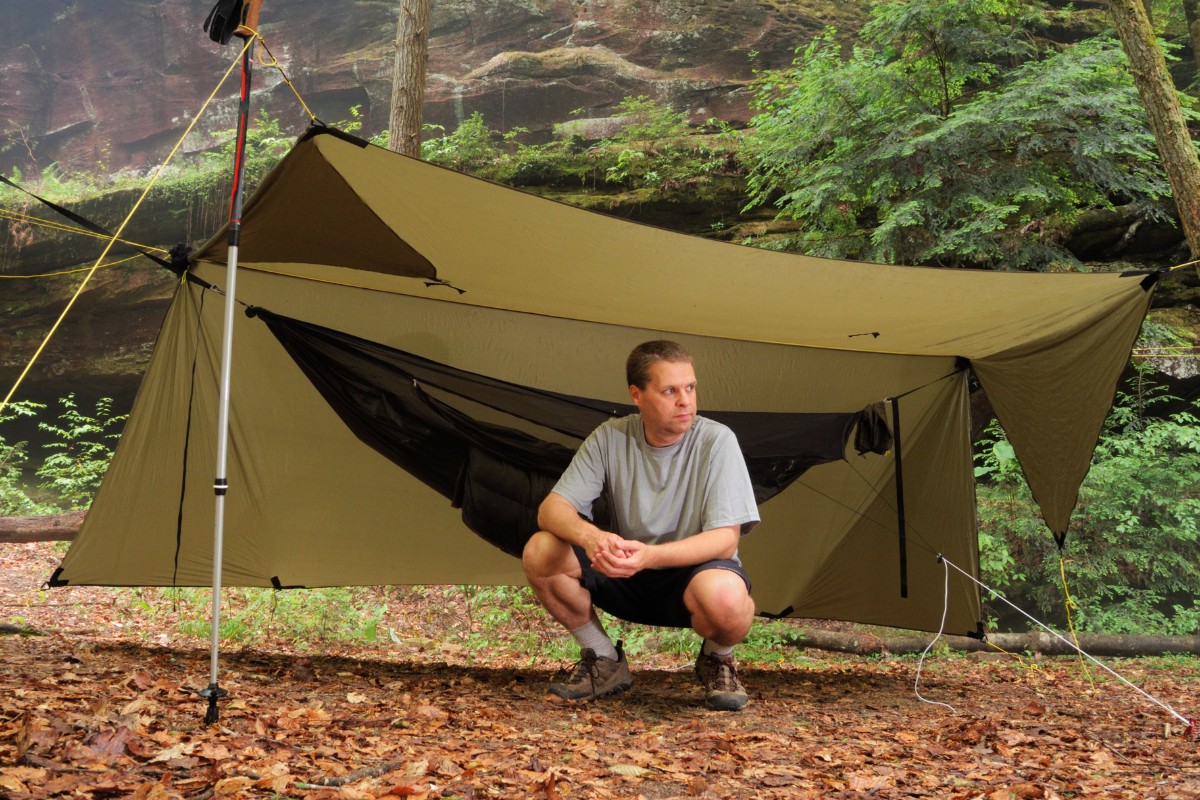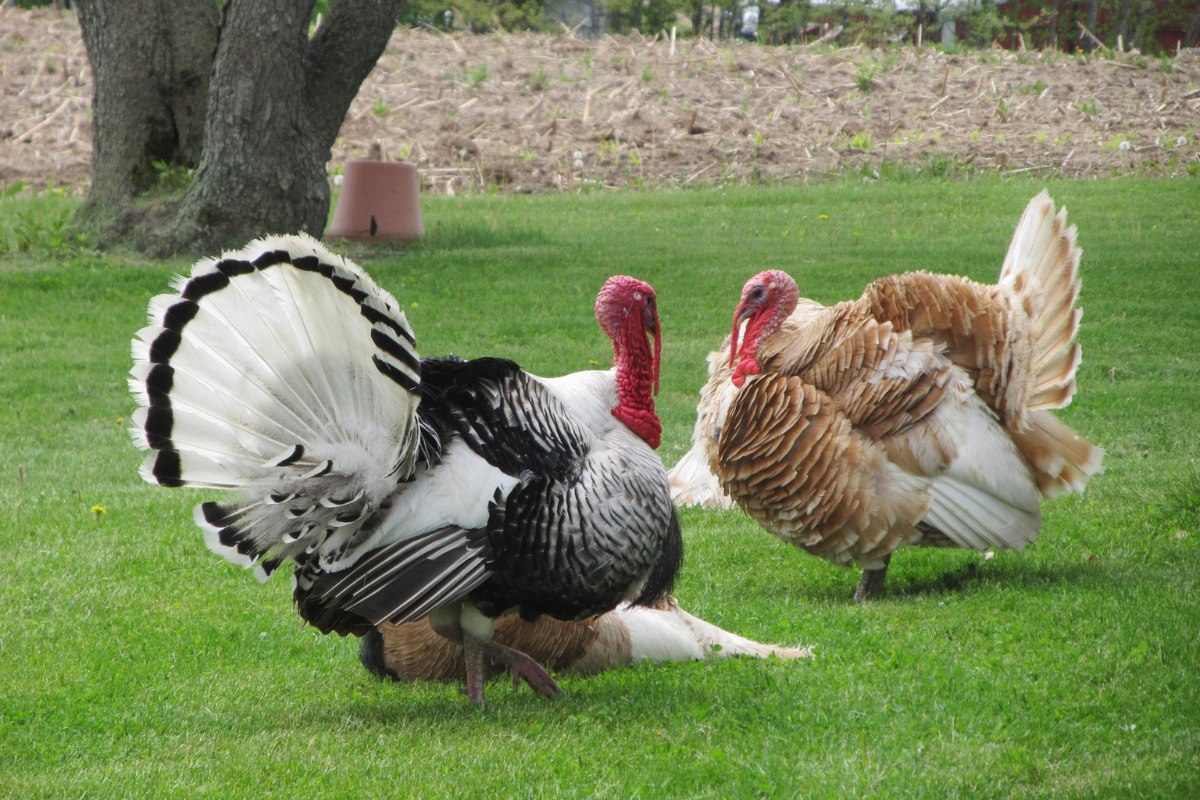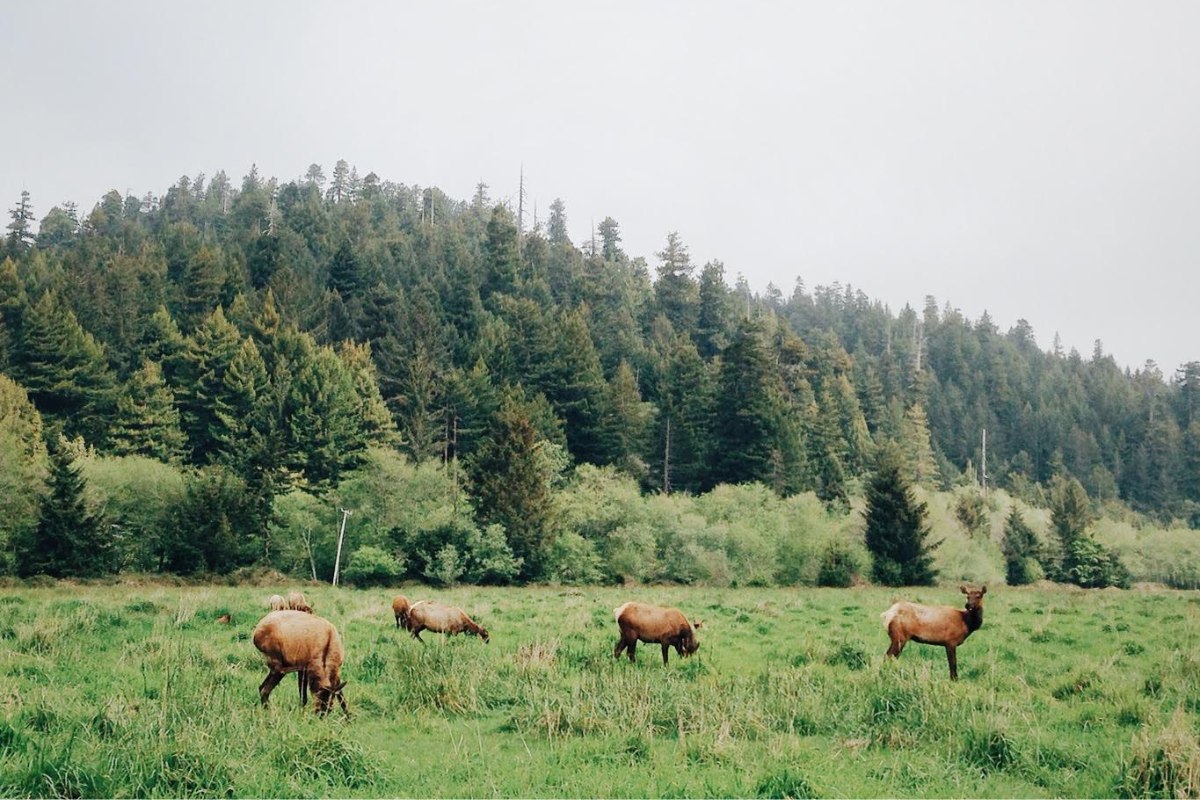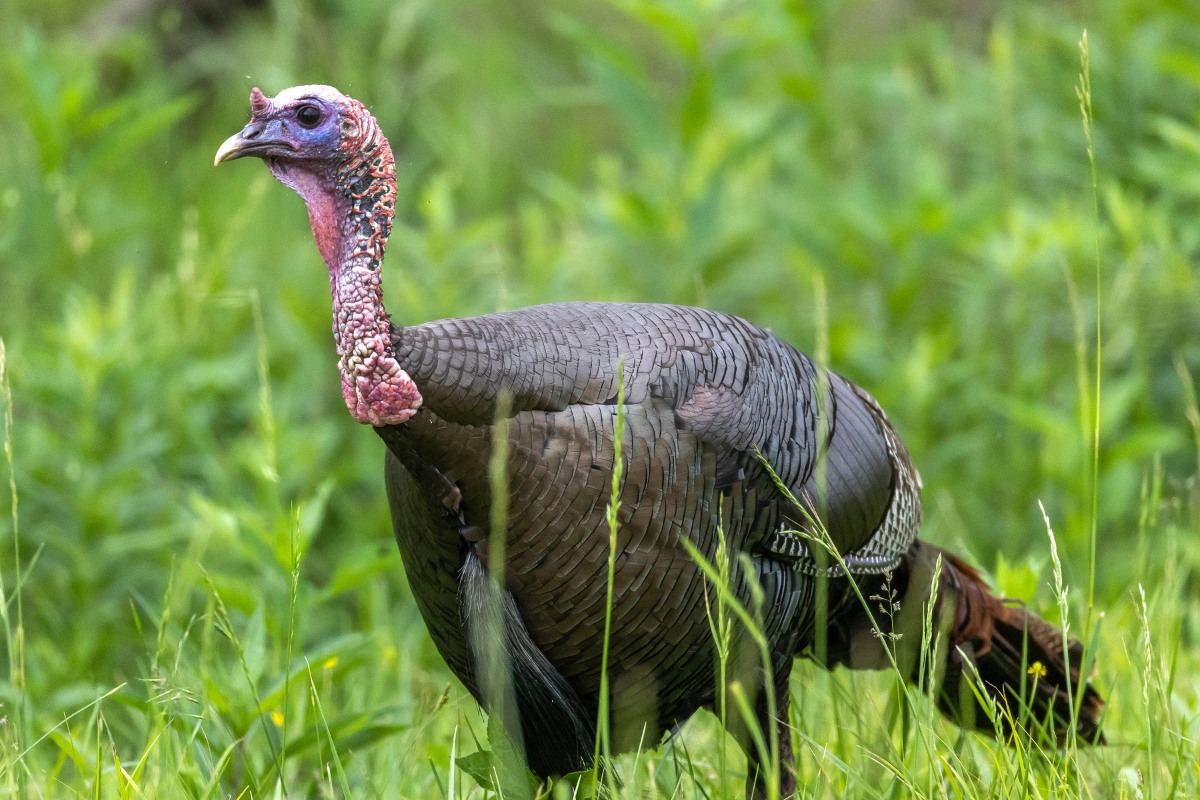The keys to understanding shot placement on a white-tailed deer are rooted in a basic understanding of the deer’s anatomy and the performance limitations of your weapon and yourself. Hopefully, we all remember a little something from our days in grade school dissecting frogs in Biology 101 to know that the circulatory system, respiratory system, and central nervous system (CNS) are essential for maintaining life.
Knowing which organs and arteries, when damaged, and their locations will result in the quickest, most humane death. Having the confidence in yourself and your equipment will allow you as a hunter to make the ethical choices in the field that determine when to shoot and when to pass.
Central Nervous System (CNS)
Let’s examine the CNS first so that we can rule it out as the obvious choice for a target. The CNS consists of the deer’s, yours, or any other animal’s, for that matter, brain and spinal cord. Since these two components of the body control all bodily functions, it stands to reason that they should be a good way to bring the animal down. But nature has evolved very effective means for protecting these areas. Thick, dense bones (vertebrae) surround the spinal cord, and the brain is, of course, encased in the skull. These bones offer the largest reduction factor of the most important rule for shot placement: penetration.
Most hunters would agree that a headshot is not preferred, but some folks would choose it to “save the meat.” But it’s a small target to hit with a bow or a rifle. The brain is only about the size of your fist, and the head is often moving. Only a full frontal presentation would offer the best chance for adequate penetration. Even if an arrow should find its mark, it rarely results in the immediate death of the animal. A follow-up shot or throat cutting may be required on an animal thrashing about uncontrollably. This is not only dangerous for you but not the most humane for the deer, given your other options.
Spinal Cord
The spinal cord, roughly the diameter of an ink pen, is a target far too small for which to intentionally aim and will result only in paralysis from the point of impact on the animal to its tail and not its death, again requiring further action to dispatch. Neck shots are sometimes considered as a means to save damage to the meat. Although this practice can be performed successfully, it requires very accurate shot placement to the vertebrae with the intention of damaging the deer’s spinal cord, causing immediate paralysis of the entire body. Therefore, although not recommended, a high-caliber rifle at close range (under 100 yards) would deliver a lethal shot to the neck so long as the conditions allowed. But given the formidable defenses and small target sizes, the percentage for success, in general, is far too low for the hunter to be settling his/her crosshairs on the Central Nervous System.
Circulatory System
The circulatory system, with all its capillaries, veins, arteries, and the center of it all, the heart, is by far the Achilles heel for the deer and should be our point of focus. However, it is still not as simple as hitting the deer and following him until he bleeds out. Whitetails, despite their relatively thin skin and light bones, are very tough animals. Wounded deer may live for several days or weeks before succumbing to an injury and some may make full recoveries. The key is taking out the system’s headquarters, the heart, or the respiratory system’s lungs. But where are they?
If you were to draw imaginary lines across a deer’s body from chest to tail, the deer’s heart would be found in the bottom third, tucked just behind the shoulder. The lungs would begin in that lower third and extend into the middle third, leaving the spine and back musculature remaining in the top third. Why are the heart and lungs such attractive targets? Well, their basic functions make them the main hub for blood supply and loss when penetrated, and they are a relatively large area in which to hit in comparison to the CNS.
Also shots to this area are devastating. A deer may drop in his tracks when shot through the heart with a rifle because the immense trauma induced by such high energy can literally knock a deer off its feet. Whereas a heart-shot deer from a bow will result in the deer running for up to about 10 seconds. This is because where a broadhead cuts, a bullet obliterates. But what is happening when the deer reacts by running after the shot? His stress levels, adrenaline, heart rate, and breathing accelerate. This accelerated function only causes the deer’s heart to beat harder, thereby making it bleed that much more profusely, resulting in a quick, clean death and reducing the gamey flavor often attributed to venison.
A deer’s lungs are filled with tiny blood vessels transporting blood to the alveoli, where oxygen is absorbed from the air that is inhaled. To “double lung” or place a shot through both lungs, will ensure an easy tracking job and a short recovery. Penetrating the lungs causes not only massive blood loss but the blood will saturate the alveoli, preventing gas exchange and depriving the animal’s body of vital oxygen. So even if only one lung is hit, the animal’s body will shut down and ultimately succumb to asphyxiation, drowning in its own blood.
Arteries and Veins
Also part of the circulatory system are all the arteries, veins, and capillaries transporting blood back and forth between the heart and all other bodily tissues. Although each of these passageways may come into play to some extent during the course of the arrow or bullet passing through the deer’s body, the main focus is only on certain arteries and one vein. These would be the aorta, carotid artery, femoral artery, and jugular vein.
The severing of any one of these four, would lead to massive blood loss and sometimes the quickest kills. But these arteries and veins are not only small targets to hit, but the vascular walls of these structures are remarkably resilient. Flexible and tough, almost like a rubber hose, they can bend and stretch around the approaching blades of a broadhead, dull broadheads, especially since they may be pushing through tissue as opposed to cutting through it. Most hits to arteries come either by accident, or as the by-product of a well-placed shot in or near the heart.
Occasionally, misplaced shots that are a little higher, spinal, or on a ducking/turning animal can impact the aorta and result in a quick kill. Extreme quartering away shots expose the femoral artery following the back of the deer’s hind leg. The femoral artery transports blood under tremendous pressure, and severing it will result in a deer’s death within the same amount of time as a heart-shot animal. However, it is a very small target. Missing the artery may result in a complete miss of the animal or only a wounded animal.
The final two, carotid artery and jugular vein are found in the deer’s neck. Protected by dense muscle and the neck vertebrae, these are difficult targets to ensure a good hit. However, in the case that either is severed, the animal will bleed out very quickly, or the blood supply to the brain is cut (carotid), also resulting in a quick kill. They sound like tempting targets on paper. But like all other arteries, the risk of failure is too high and should be considered only as collateral damage.
Digestive System (Liver)
The final organ of interest is the liver (digestive system). The liver acts as a filter for the deer’s blood and is found just outside the deer’s diaphragm which separates the chest and abdominal cavities. Although it is a mortal wound, hits to the liver are by accident only, usually resulting from hitting the deer a little too far back from the typical aiming point of tight behind the front shoulder. A shot to the liver, unlike the highly oxygenated red blood of the heart and lungs, will cause blood to appear as a deep dark red, to purple, almost black color. If you were to find this kind of sign on your arrow, back out quietly and give the deer a minimum of 6 hours to expire.
Where to Shoot a Deer
OK, so we have ruled out all other possibilities and are aiming for the heart and lungs. How do you do that?
Shot Angle
Shot angle is extremely important whether you are hunting with a bow, muzzleloader or rifle. Your weapon of choice and the setup that you created have limitations on the amount of energy it delivers to the target. The dissipation of that energy as the projectile encounters hair, hide, muscle, and bone on its way to its ultimate target (heart and lungs) may influence your effective shot angle.
The first limitation is range. Knowing your effective range, whether it be 40 yards with a bow or 300 yards with a 30-06, should help your decision-making as the room for error decreases dramatically with distance. Now, let’s say you look up and ambling down the trail in front of you, inside your effective range, is the buck of a lifetime. You don’t want to mess this up and take a poor shot that may result in a wounded deer getting away, or worse yet, the deer running off and dying a day later without a recovery. Let’s break down a deer’s presentation angles, points of aim, and which ones offer the highest probability for a quick kill.
Broadside
Broadside is the most preferred position a deer can be when he steps into range for several reasons. The presentation matches that which has been practiced during the preseason when shooting at the flat side of a bullseye target, paper cut out, or 3D target. Although it’s recommended to practice shots from all angles, probably 90% of shots are made from this position. So this look is the most familiar and psychologically gives us the most confidence. The second reason is obvious as it provides a large target area to deliver a lethal hit. The side profile of the heart and lungs is roughly the size of a dinner plate and any hit within this area would result in either the heart or both lungs. The final reason is that it offers the most direct route for the projectile to the heart and/or lungs. Slipping an arrow between or through the ribs is most probable, even with low-energy setups or youth bows. However, an arrow to the shoulder blade may lack the energy needed to reach the vitals behind.
Pin placement in this position should be for the heart or at the top of the heart, located just behind the front leg and in the bottom third of the deer’s body. This would allow slight room for error or adequate compensation should the deer react to the sound of the shot. A deer “jumping the string” can drop several inches as he ducks and/or turns when startled by the sound of your bowstring as the arrow is released. By aiming at the heart, a ducking animal simply moves the point of impact to the lungs and still within the kill zone. This location also damages less meat, allowing for maximum harvesting.
A rifle or muzzleloader shot should be taken with the crosshairs fixed on the same location for the same reasons, other than jumping the string, of course. However, many hunters prefer the high-shoulder shot from this position. The point of aim would be at the upper, back corner of the shoulder blade. The high shoulder shot will do several things that not only result in a quick death but, when executed properly, the deer dropping in its tracks. First, it will shatter the shoulder blades, immediately causing physical disablement. It will destroy the brachial plexus, area of nerves, veins and tendons, typically resulting in paralysis. Finally, it will cause damage to the top portions of both lungs, inducing massive blood loss. This shot comes in handy when limited or no tracking is at a premium. The downside is that it can also result in severe damage to the front shoulders, laying them to waste.
Quartering Away
Quartering-away angles are also fantastic positions on which to take a shot. With the deer’s body angled away, it exposes more of the chest cavity that is otherwise protected by the front leg and shoulder on a broadside shot. This allows the archer to place an arrow with a longer path through the vitals, causing more trauma. This angle also creates a slightly wider target area, allowing more room for error. There is some risk of arrows glancing off rib bones and affecting the accuracy of the shot. The risk of this happening is dependent upon your bow setup, broadhead capabilities, and the severity of the angle.
The point of aim has to be adjusted so that the arrow does not enter too far forward or backward, missing the deer’s heart and lungs. For most quartering away shots, the shooter will want to aim for the arrow’s point of exit rather than entry. Place your pin just behind the shoulder on the opposite side of the animal. This will ensure that the projectile finds its intended target. Remember that with increased angle comes increased distance that the arrow must travel through the deer’s body to reach the vitals. This increases the chances of encountering gut. Not only is a gut shot deer foul-smelling, but it can taint the meat during prolonged recovery times. It also increases resistance and energy dissipation, thereby reducing penetration and could prevent the arrow from reaching the deer’s vitals.
Firearms and muzzleloader hunters can still take dead aim behind the shoulder as those rounds produce enough energy to devastate the front of the chest cavity. Severe quartering angles may require too long of a bullet path, thereby creating additional resistance and the potential for extensive damage to musculature (loss of meat) and loss of penetration. Quartering away angles are a great shot presentation, especially when one’s closer to broadside than straight away.
Quartering To
Quartering to angles offer more resistance to an arrow or bullet because the vitals are now protected behind the front leg and shoulder. There is a greater distance through the body for the projectile to travel and more likelihood of encountering dense muscle and bone along the way. This angle is not recommended for bow hunters or small-caliber rifle hunters.
Just like in quartering away angles, the point of aim must be adjusted only this time in the opposite direction. You will still want to hold your pin just behind the shoulder on the opposite side of the deer.
The issue is that the point of entry is usually inline with the front leg, shoulder, or just in front of either. The skeletal structure of a deer’s front leg can offer substantial resistance to an arrow. The hunter will have to slip the arrow in front of the shoulder or, if the deer is close enough, over the top, to achieve maximum penetration and give themselves their best chance of connecting with the deer’s vitals. A shot placed behind the shoulder facing the hunter, at a quartering-to-you angle, can easily bypass the lungs and will almost certainly puncture the paunch or other organs of the digestive system. This will allow for the release of gases and bacteria from the GI tract into the body cavity, tainting the flavor of the meat and produce a health risk if the deer is not recovered promptly and thoroughly cleaned.
Deer with this type of wound will need plenty of time (12 hours plus) and may live for up to a day or more and leave very little sign to follow. For these reasons, it is best to be patient and wait for the deer to turn. If you decide to take this shot, the closer the animal is, the better, as it will allow for the delivery of more energy and better penetration to help the arrow find its mark.
Although the .243 is a legally accepted round for deer and is beloved by thousands of hunters across the country, we consider it a handicap when it comes to deer. The story of a big buck getting away after being shot broadside with a .243 is too many, and we have heard enough to have lost faith in its effectiveness on anything but the perfect shot. That being said, we would recommend the minimum caliber of a .270 when going after whitetails because of its ability to deliver enough energy to penetrate a deer’s shoulder and produce a lethal hit. That being said, we would still recommend waiting for a better shot angle, but quartering-to-you shot is possible so long as your rifle of choice can deliver enough energy.
Straight Away or Facing
Straight away or facing shots create the most amount of resistance possible when targeting the deer’s heart and lungs. A facing shot requires an arrow to penetrate tough muscle, the cartilage and the bone of the brisket and creates a narrow profile of the target area. Throat or neck shots are presented, but given the issues already discussed with those, the chances for success are reduced. A straight away angle creates the longest distance through the body that a projectile can make, if it can even reach the vitals. The largest, densest bones in the deer’s body, pelvis and legs, stand in your way, not to mention the full length of the abdominal cavity and all its glories.
Pin placement for a facing shot would be the dead center of the chest or base of the neck for elevated shots. Your goal is to punch through breast-plate, take out the lungs, and exit the deer prior to breaching the diaphragm and entering the abdomen. Rifle shots tend to continue through the deer and make a mess of the entire body cavity.
A straight away angle leaves only one opportunity and that is the Femoral Artery located along the back of the hind leg. Aim for the color line between the deer’s white under-belly hair and the brown outer coat. Expect massive bloodshot zones of muscle in the ham and meat loss. Neither of these angles offers the best opportunity for a humane kill and presents more potential problems than rewards. It is this hunter’s opinion that shot opportunities at these angles are passed only.
Elevated or Overhead
Elevated or overhead shot angles are common place given that the most effective and practiced means for hunting deer are from elevated ambush positions such as treestands. Pin choice can vary depending on the severity of the angle. You may find that you will need to use a shorter-range pin on a longer shot if you set your stand where the birds are flying under you. One example is that so long as you are under 20 feet and the deer is beyond 20 yards, there is not a substantial enough difference in your point of aim to change pins. However, say you are 25 feet in the air, on a downhill slope, you can take 5 yards off of a shot on a buck at 27 yards. Instead of using your 30 yard pin, you can place a 20 yard pin just above his heart and 10 ringed him. The compensation would be reversed on deer above you in elevation. In either case, you want to visualize where the arrow or bullet will exit the deer. Hitting the deer a little high, when you are above the animal, will angle the arrow down through the deer’s vitals. Again an exit point behind the opposite shoulder in the lower third of the chest is ideal.
Sometimes that buck has a bead on your position and comes right to the base of the tree. Maybe you were calling or rattling and got his attention and now he is straight below you. Vertical or near vertical shots present a good opportunity for a kill because the extremely close range means maximum penetration capabilities if you can slip past a deer’s spine and shoulder blade. Place your pin so that the exit point would be near the center of the bottom of the deer’s chest, equivalent to just behind the deer’s shoulder but slightly offset to avoid the spine. If your bow setup does not have the energy to get full penetration to provide an exit wound, you may want to think twice before attempting this shot as there will be very little blood to follow. If you do pull it off and get an exit would, it is red carpet city straight to your trophy. A difficult shot, and not preferred, but a very effective angle with the right set up and accuracy.
Understanding the Keys to Shot Placement
Understanding the keys to shot placement for whitetails is an essential part of being a good hunter and is as much mental as it is the physical ability of getting that arrow to hit where you aim. As hunters, we embark each season on a journey that ends with the death of another animal. That process demands a lot of hard work on the part of the hunter to place themselves in the right position to provide a shot opportunity. When that opportunity comes, we have a responsibility to be respectful of that animal’s life by having prepared ourselves physically and mentally so that we can take that life with as little distress as possible and not miss out on what may be the chance of a lifetime. This includes knowing where the best vitals are, what structures are around them, limitations of equipment, knowing your own limitations through practicing real shooting situations, and being able to let a big one go when things just don’t quite come together. The best stories are not always about the ones that didn’t get away.
